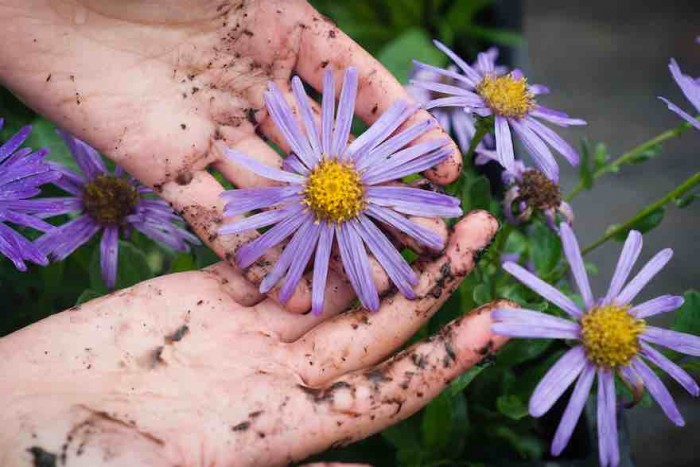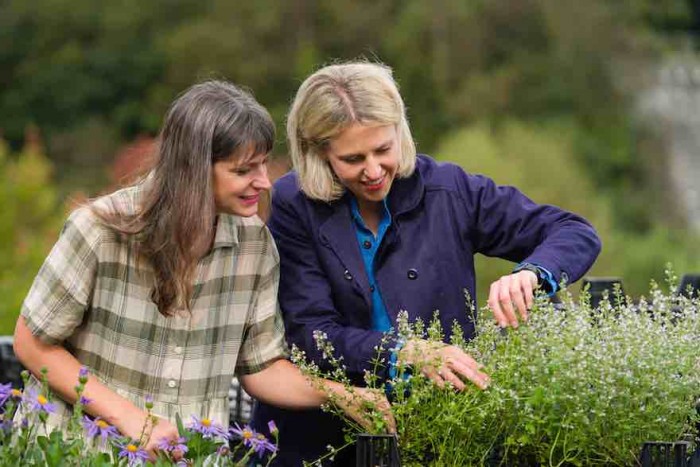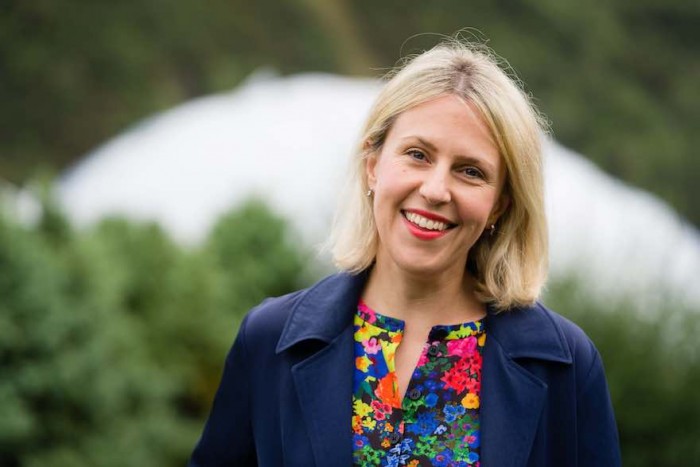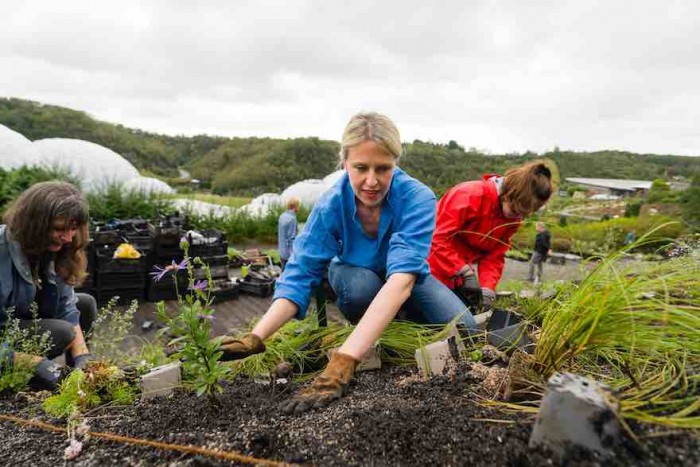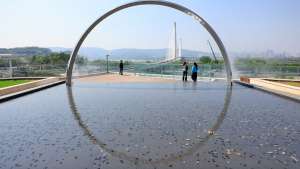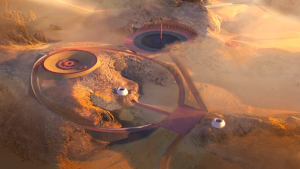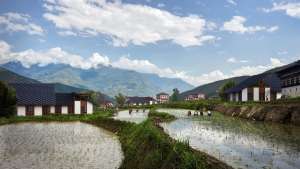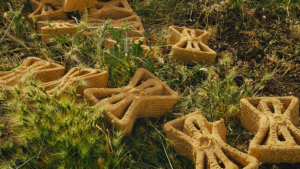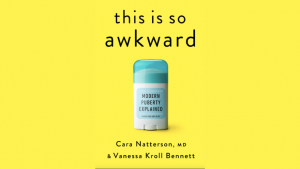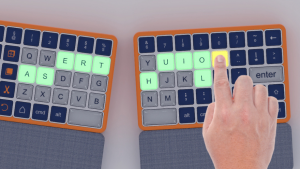Last year, the UK’s Eden Project – an organisation that explores the interconnections between all living things – commissioned artist Dr Alexandra Daisy Ginsberg, a Design Indaba alumnus, to create a digital artwork fabricated in living plants that would raise awareness about the global plight of pollinators, which are in decline.
The artwork forms part of the ‘Create a Buzz’ programme supported by the Garfield Weston Foundation. Misha Curson, Senior Curator at the Eden Project, says the programme embraces a cross-disciplinary approach, breaking down silos in art, science, horticulture and audience to communicate the story of pollinators and suggest ways to support them.
“When I was commissioned by the Eden Project to make an artwork about pollinators and their plight, I suggested instead making an artwork for pollinators,” Ginsberg tells Design Indaba. “With a 55m slice of Eden tantalisingly available for a permanent installation, why not fill it with forage for pollinators? We could make a living artwork whose main audience is more-than-human.”
“I decided to develop an algorithm that would create gardens designed with empathy for other species. The algorithm would select and arrange plants for me, so my aesthetic sensibilities didn’t get in the way. The challenge was how to encode empathy into an algorithm: What is the actual problem we are asking the algorithm to solve? I chose to define empathy as supporting as many pollinator species as possible.”
“Since the algorithm is made by humans – in particular by string-theory physicist Dr Przemek Witaszczyk – it can’t remove human biases, but it can help to dull them. Choosing and arranging plants from a special plant database curated with Eden’s horticulturalists and pollinator experts, the algorithm creates gardens that support pollinators' behaviours and tastes, rather than our own. The gardens look quite different to gardens that humans design. They feature every shape of flower to suit different pollinators, have odd juxtapositions of tall and short plants, and dramatic colour clashes,” Ginsberg explains. “Pollinator Pathmaker creates unnatural gardens, designed for nature.”
Intriguingly, insect pollinators see colours differently to us. Ginsberg says that bees can’t see red but can see UV, while butterflies can generally sense red, green, blue, and UV. “The co-evolution of plants and their pollinators means that flowers bloom when their favourite pollinators emerge, and different pollinators forage in different ways - some species, like bees, memorise the shortest routes between the patches of flowers they visit (and they may visit 10 000 flowers in a day), while others such as beetles randomly forage.”
The unique ‘interspecies art experiment’ will be the largest-ever climate-positive artwork in the world. But the Eden garden is just the beginning and the first in a series of large, commissioned editions. A second artwork, commissioned by the Serpentine Gallery, will be planted in London’s Hyde Park in 2022. The first international Edition will be in Berlin, created with Light Art Space and a local expert panel of horticulturalists and pollinator experts. “Since the Berlin region has a different climate – it’s much hotter in summer and much colder in winter – we will be creating a new regional plant palette, which will be added to pollinator.art,” Ginsberg explains.
Design Indaba asked Ginsberg if a South African edition was on the cards. “I’d absolutely love that – my family is from Cape Town and since I’m named after the Namaqualand daisy (Dimorphotheca sinuata), I hope it would make it into a South African list!” she says, adding that creating a South African plant palette needs a South African commissioner to join the team, and she encourages interested parties to reach out to her.
Ginsberg has made the algorithm she helped to pioneer available to any gardener in the world via an interactive website. Although the current plant palette is suitable for northern Europe only, this is likely to expand. “We can see people are playing with the garden generator all over the world, flying through and exploring their digital gardens visualised in 3D using my plant paintings,” Ginsberg says. “We’ve had lots of enthusiastic messages from all over with users asking when a plant list will come online for their region.”
“I suggested that we put the algorithm online so that anyone could play with it and could create their own unique edition of the artwork, complete with downloadable planting instructions, then plant it at home or in a community space. With the support of the Gaia Art Foundation and Google Arts and Culture, we made this happen.”
What’s next on Ginsberg’s agenda?
“I think Pollinator Pathmaker will be keeping me muddy for the foreseeable future!” she says. “The launch of the work is the beginning of a big experiment, which opens many avenues of exploration, from asking what a garden is, to how art can be used to give us agency in the environmental crisis, to developing art commissioning models that bring together experts, institutions, collectors and members of the public around the world, and even to scientific research - we’re beginning to explore how we can run experiments to see how pollinators are interacting with Pathmaker gardens.”
Pollinator Pathmaker is not just for the green-thumbed, and Ginsberg admits that her DIY garden is only the second she has ever planted (with the first at the Eden Project). “I’m very lucky to have a space to plant, and that’s a really important issue. Gardening is in many ways a privileged activity, and of course, access to space is part of the problem, one that became far more evident in the last two years of lockdowns,” she muses.
“We want to develop the community aspect so that if you don’t have a garden or a place to plant, you can still get involved by planting in a school or community space, for example. Pollinator Pathmaker should be a creative way to give agency in this age of climate and biodiversity crisis.”
Can participation in an art-led campaign be used as a mechanism to help empower people to see the world from other perspectives? If anyone has the answer to this question, it’s Ginsberg.
Credits:

